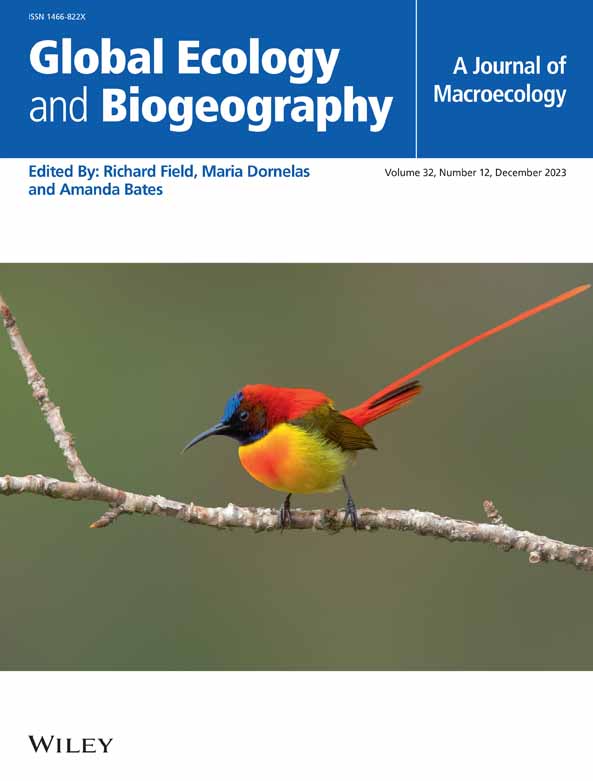Combining Hierarchical Distribution Models With Dispersal Simulations to Predict the Spread of Invasive Plant Species
Abstract
Aim
Predicting the future distribution of invasive species is a current challenge for biodiversity assessment. Species distribution models (SDMs) have long been the state-of-the-art to evaluate suitable areas for new invasions, but they may be limited by truncated niches and the uncertainties of species dispersal. Here, we developed a framework based on hierarchical SDMs and dispersal simulations to predict the future distribution and spread of invasive species at the ecoregion level.
Location
Cantabrian Mixed Forests Ecoregion (SW Europe) with global distribution data.
Time Period
1950–2063.
Major Taxa Studied
Vascular plants.
Methods
We used occurrence data from 102 invasive species to fit SDMs with machine-learning algorithms and to simulate species dispersal. We combined habitat suitability models based on species' global climatic niches together with regional models including local variables (topography, landscape features, human activity, soil properties) in a hierarchical approach. Then, we simulated species dispersal across suitable areas over the next 40 years, considering species dispersal limitations and climate change.
Results
Global climatic niches retained a strong contribution in the hierarchical models, followed by local factors such as human population density, sand content and soil pH. In general, the highest suitability was predicted for warm and humid climates close to the coastline and urbanised areas. The inclusion of dispersal abilities identified different trajectories of geographic spread for individual species, predicting regional hotspots of species invasion. The predictions were more dependent on global suitability and species dispersal rather than climatic warming scenarios.
Main Conclusions
This study provides a comprehensive framework for predicting the regional distribution of invasive species. While hierarchical modelling combines non-truncated global climatic niches with regional drivers of species invasions, the integration of dispersal simulations allows us to anticipate invasibility in new areas. This framework can be useful to assess the current and future distribution of invasive species pools in biogeographical regions.

 求助内容:
求助内容: 应助结果提醒方式:
应助结果提醒方式:


